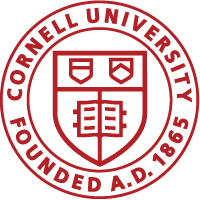Mechanisms of Insulin Regulation in Equine Pregnancy
Principal Investigator: Callum Donnelly
DESCRIPTION (provided by applicant):
Insulin dysregulation during pregnancy in horses has been associated with development of osteochondrosis dissecans (OCD) in the resulting foals. OCD is highly prevalent amongst juvenile performance breeds including Thoroughbred and Standardbred horses. Reduced insulin sensitivity (‘insulin resistance’) of late pregnancy is a normal physiologic response in horses. This physiologic response may easily become dysregulated, programming the future metabolic and orthopedic health of the foal. We understand little about the mechanism(s) leading to physiologic insulin resistance in pregnant mares. By better understanding the normal mechanism(s) that lead to physiologic insulin resistance of pregnancy we may better intervene and prevent the developmental origins of OCD. Therefore, the primary objective of this study is to investigate the underlying mechanism(s) driving physiologic insulin resistance and reduced glucose effectiveness in pregnant mares.
The first part of this study will investigate the temporal association of steroid hormones and bile acids (BAs) with physiologic insulin resistance in healthy pregnancies. Steroid hormones and BAs have direct roles in metabolic regulation (including insulin), with pregnancy significantly modifying both. For this aim insulin regulation from mid-pregnancy to term will be evaluated in conjunction with measuring plasma steroid hormone and BA concentrations with mass spectrometry.
In the second experiment of this study, we will evaluate the direct effects of the major estrogens and progestogens of late pregnancy on insulin regulation using a model of late pregnancy. This data will corroborate temporal associations between insulin regulation and prevailing hormone concentrations.
Finally, we will examine the relationship between steroid hormones, bile acids and adipocyte (fat cell) function in pregnant mares, normal non-pregnant horses, and non-pregnant horses with insulin dysregulation. Adipocyte interaction with insulin is modified by estrogens and bile acids. Adipocytes are frequently implicated in insulin dysregulation. We will compare gene expression, steroid hormone concentrations and determine nuclear estrogen and bile acid receptor expression across the three groups. This aim will refine our understanding of the complex mechanisms involved in insulin regulation during pregnancy in horses.
Insulin regulation during pregnancy directly affects the lifetime health of the foal. The intended experiments in this proposal will deepen our knowledge of insulin regulation during equine pregnancy and open avenues for future studies focused on pregnancy interventions that improve fetal, neonatal and adult health.


